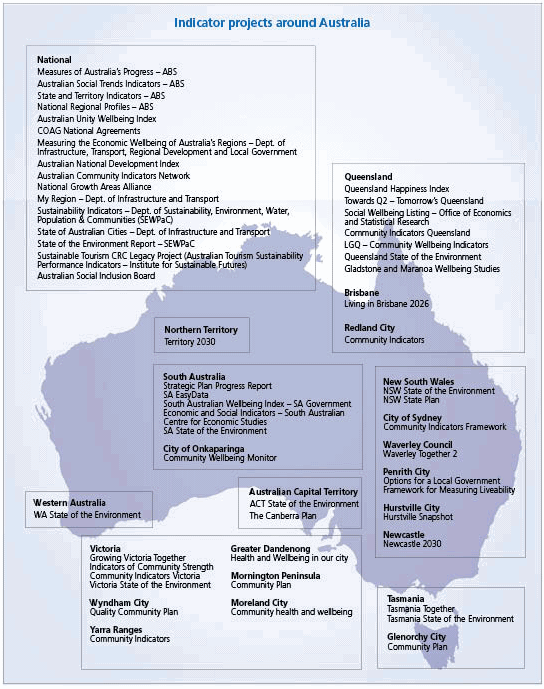STATE, TERRITORY AND COMMUNITY CONTRIBUTORS
Background
The MAP consultation was designed to be as inclusive as possible, and to capture the views of people from across Australia.
The ABS held workshops in each state and territory capital, where it collected feedback from interested clients of the ABS, ranging from state and territory government clients to business and community groups.
In addition, the ABS examined a range of state and territory government planning documents. These documents contain information on goals and aspirations that guide the development of the states and territories. They are often developed through consultation with constituents. For example, in developing their State Plan, the South Australian Department of Premier and Cabinet gathered information from around 9,000 South Australians.
The ABS also considered work done by a number of local governments to track progress for their communities, and sought input from a number of non-government groups developing community indicators for their region. In particular, the ABS worked closely with the Australian Community Indicators Network (ACIN) – a consortium of regionally based community indicator groups and individuals.
This chapter provides detail on the state and territory workshops held by the ABS; it examines the plans for regional and local progress set out by state, territory, and local governments; and it outlines relevant initiatives currently being undertaken by community groups.
In the state, territory and community contributions, there are many common ideas of progress. These ideas include: strong, resilient economies; quality health care; quality of life and well-being; sustainability of built and natural environments; transparent, trustworthy and effective governance systems; access to school, higher education and vocational education opportunities; and having strong, vibrant, healthy communities.
Figure 4.1: Australian indicator projects.
Please note this map is not a comprehensive account of projects occurring. Its inclusion is to indicate the extent of the initiatives occurring nationally.
Visit an interactive version of the map here: http://blog.abs.gov.au/Blog/mapblog2010.nsf.

 Print Page
Print Page
 Print All
Print All